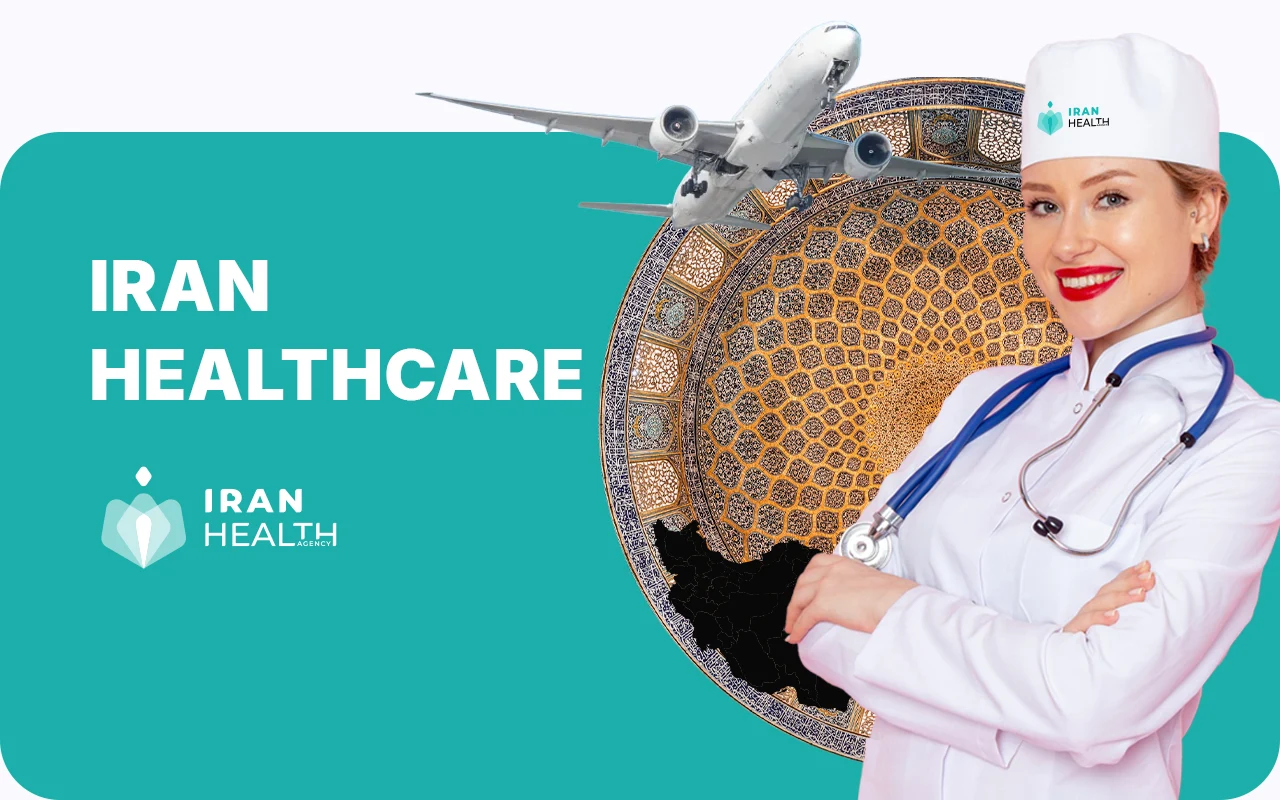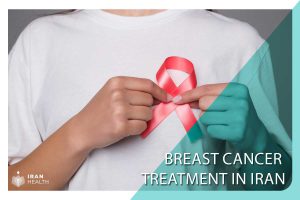Iran healthcare ranking
According to recent evaluations, Iran ranks fifth among Eastern Mediterranean countries regarding health status indicators.
Despite this relatively high ranking, the country needs help with healthcare expenditures. Only about $415 is spent per capita, which is significantly lower than that of many top-ranked countries in the region.
Read more: Medical tourism in Iran

Iran Healthcare system
Iran’s healthcare system has a unique structure, which you can see below.
- Public vs. Private Sector: The Iranian healthcare system is predominantly public, with the government playing a crucial role in providing primary healthcare services. The private sector is involved mainly in hospital services, but public facilities dominate the primary care landscape.
- Primary Healthcare: Iran has achieved remarkable success in primary healthcare, leading to improvements in life expectancy and reductions in infant mortality rates over the last few decades. The system includes comprehensive vaccination programs and maternal health services.
- Challenges: Despite successes, the Iranian healthcare system faces several challenges, including rising costs, resource shortages, and inequitable distribution of healthcare services. These issues are exacerbated by economic sanctions and financial constraints, which impact the overall effectiveness of health services.
Read more: Infertility Treatments in Iran
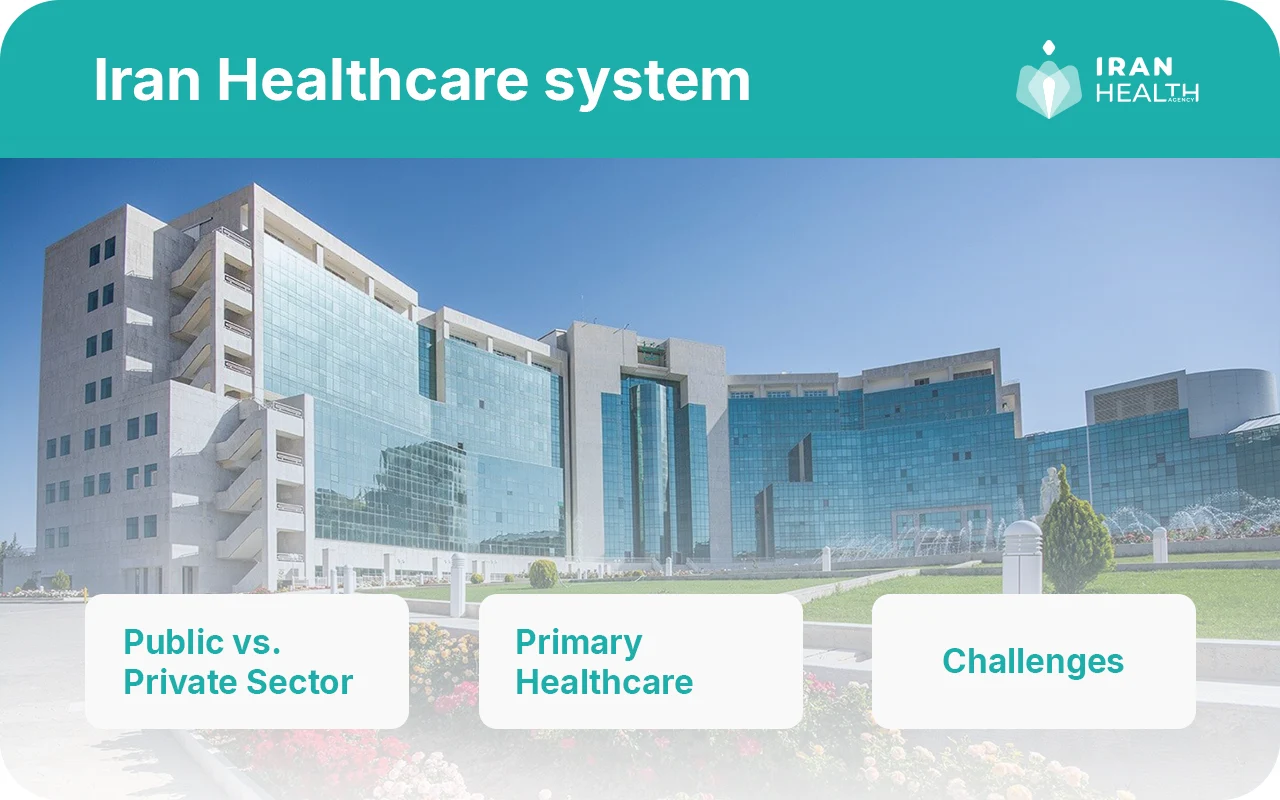
Does Iran have a good healthcare system?
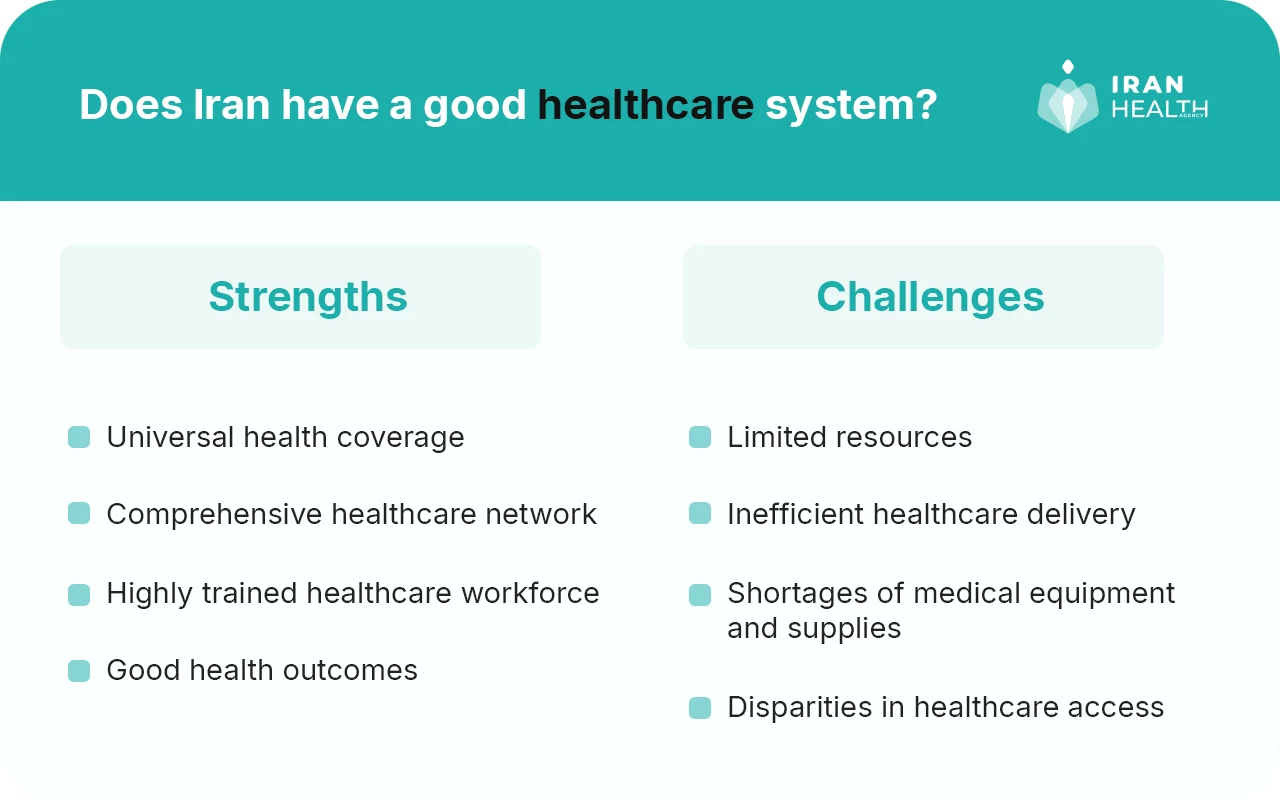
Iran has a pretty good healthcare system in terms of its income and the rest of the area. The country has come a long way in making healthcare more accessible. in the last few decades, Iran’s healthcare system has been made up of
the following parts:
Here are Iran’s healthcare strengths and weaknesses:
Strengths:
- Universal health coverage: Iran has a universal health coverage system, which provides access to healthcare services for all citizens, including the poor and vulnerable populations.
- Comprehensive healthcare network: The country has a well-established network of healthcare facilities, including hospitals, clinics, and health centers, which provide various services, from primary care to specialized treatments.
- Highly trained healthcare workforce: Iran has a large and well-trained workforce, with many physicians, nurses, and other healthcare professionals per capita.
- Good health outcomes: Iran has achieved significant improvements in health outcomes, including a high life expectancy (76 years), a low infant mortality rate (12 per 1,000 live births), and a low maternal mortality ratio (20 per 100,000 live births).
Read more: IVF in Iran
Challenges:
- Limited resources: Despite its progress, Iran’s healthcare system faces significant funding constraints, which can limit access to certain services and treatments, particularly for specialized care.
- Inefficient healthcare delivery: The healthcare system is often criticized for needing to be more bureaucratic and adequate, leading to long waiting times and difficulty accessing care.
- Shortages of medical equipment and supplies: Iran’s healthcare system has faced challenges accessing medical equipment and supplies due to international sanctions and economic constraints.
- Disparities in healthcare access: While healthcare access has improved overall, there are still significant disparities in access to care, particularly for rural and disadvantaged populations.
Read more: Kidney Transplant in Iran
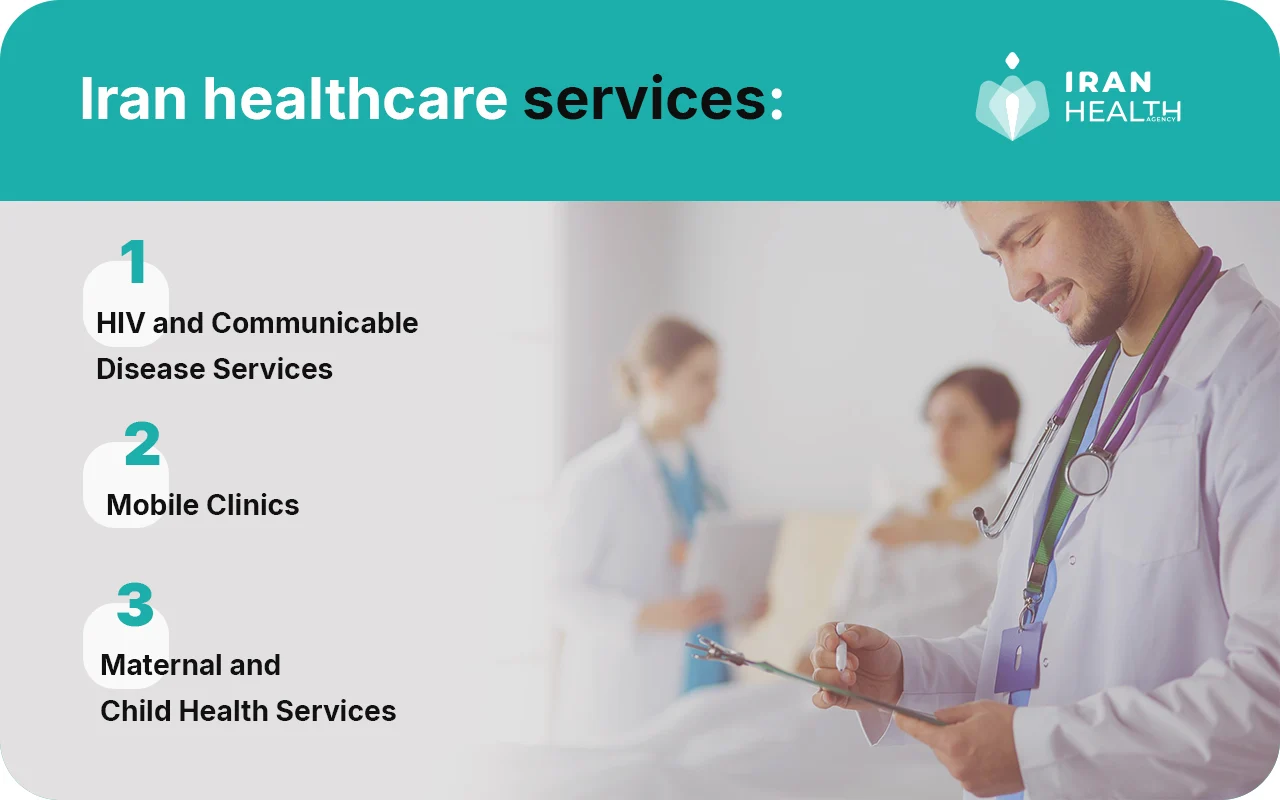
Iran healthcare services:
- HIV and Communicable Disease Services:
The Iranian health system explicitly provides HIV services and care for other infectious diseases to both documented and undocumented immigrants. This has been particularly beneficial for Afghan refugees, who represent a significant portion of the immigrant population in Iran.
- Mobile Clinics:
Organizations like Médecins Sans Frontières (MSF) operate mobile clinics that offer various medical services, including general healthcare, mental health support, and treatment for infectious diseases. These services are mainly aimed at marginalized groups, including Afghan refugees, who often face barriers to accessing healthcare.
- Maternal and Child Health Services:
MSF also provides ante- and postnatal care, family planning services, and treatment for sexually transmitted infections, ensuring that vulnerable populations receive comprehensive reproductive health services.
Read more: Rhinoplasty in Iran
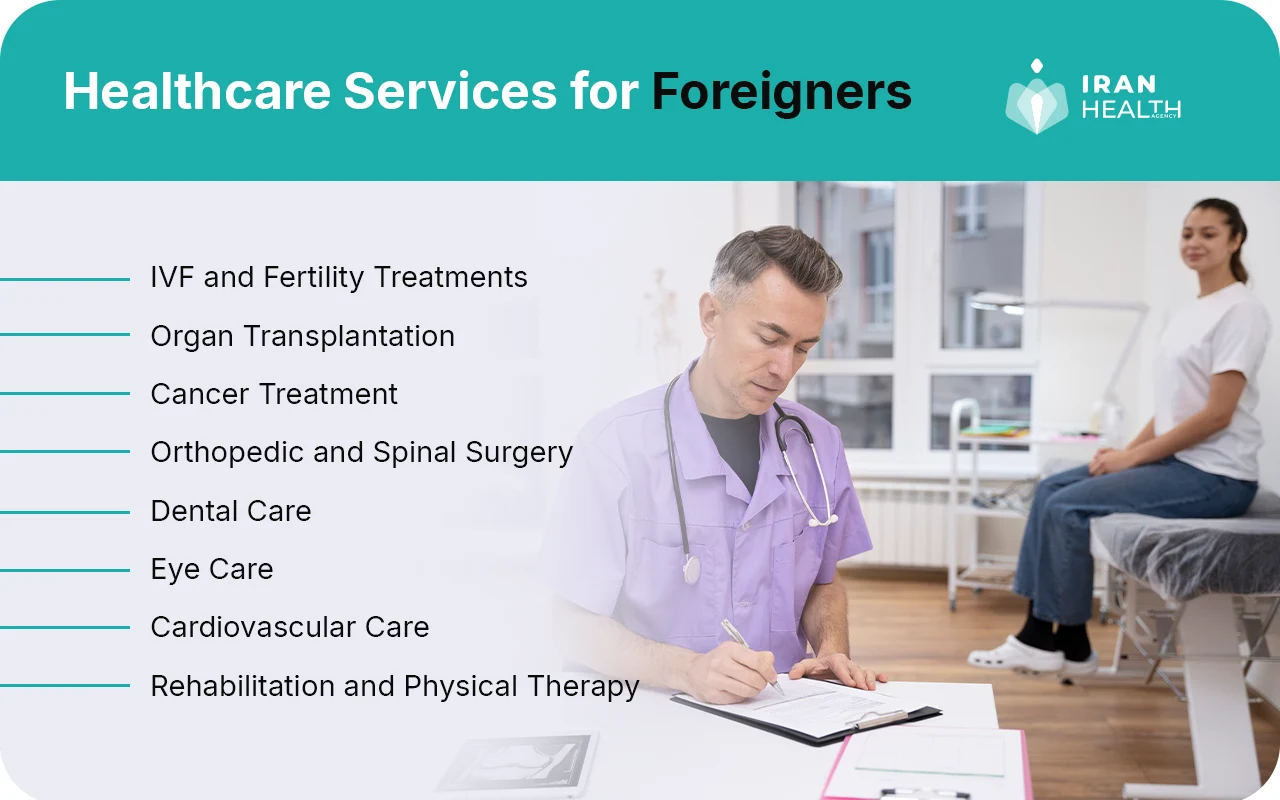
Healthcare Services for Foreigners
Iran provides healthcare services to foreigners, including undocumented immigrants. Primary healthcare services are generally free, while hospital care may incur higher costs. Notably, the Iranian health system has adapted to include refugees and immigrants, allowing them access to certain health services, albeit with some limitations.
Iran Health Agency is a medical tourism agency that works directly with Iran’s healthcare system. We have many connections in hospitals to ensure a good experience for our patients when they decide to come to another country for medical treatment.
- IVF and Fertility Treatments:
- Organ Transplantation:
- Cancer Treatment:
- Orthopedic and Spinal Surgery
- Dental Care:
- Eye Care:
- Cardiovascular Care
- Rehabilitation and Physical Therapy
Read more: Breast Cancer in Iran
Additional Services
In addition to our medical services, we also provide a range of additional services to ensure a smooth and comfortable experience for our foreign patients, including:
- Language support: We offer language support in multiple languages, including English, Arabic, and Turkish.
- Accommodation arrangements: We can arrange accommodation in nearby hotels or apartments, with options for all budgets.
- Transportation services: We provide transportation services from the airport to the hospital and back to and from appointments.
- Cultural support: We offer cultural support and guidance to help foreign patients navigate Iranian customs and traditions.
Sources:
https://globalizationandhealth.biomedcentral.com/articles/10.1186/s12992-023-00924-x
https://www.ncbi.nlm.nih.gov/pmc/articles/PMC4980340/
https://www.msf.org/iran?field_topic=6433
